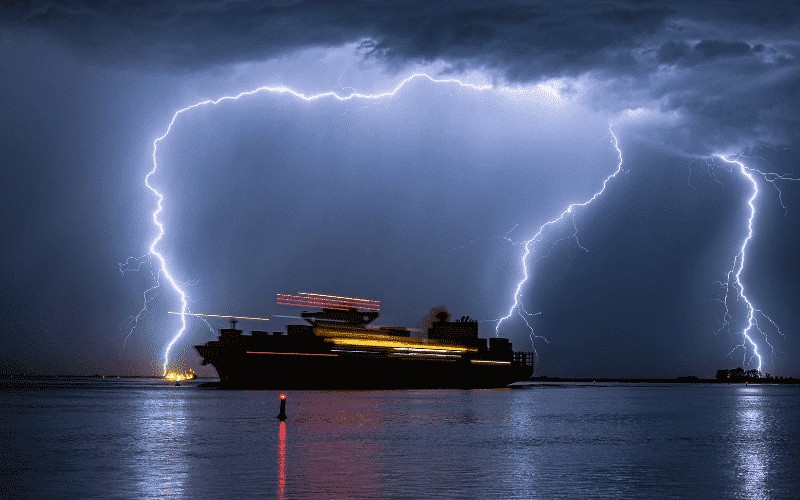
One of the most important things you can do to ensure your safety and enjoyment on the water while boating is to keep a close watch on the weather and maintain a keen awareness of it. Being aware of the fluctuating weather conditions can aid mariners in avoiding potential dangers and making more informed decisions. Nature is often unpredictable. The proliferation of weather applications in the digital age has completely transformed how mariners obtain severe weather information.
When on the water, what are some indications that severe weather is approaching?
If you want to know if the weather will be pleasant or if you should avoid the water, consider the following indicators.
Ominous skies: Observe the sky closely to ensure that it has not acquired an ominous quality in the interim. Typically, the advent of thick, heavy clouds indicates the onset of a storm. Be on the watch for a “lowering ceiling,” which occurs when the heavy, flat-bottomed clouds appear to get lower and lower in the sky.
Significant waves that are choppy: Keep a watch on the water as you steer the boat. Although some waves are normal depending on your location, extremely turbulent waves are typically a sign of an approaching storm. If this is the case, you should seek shelter as quickly as possible.
Changes in temperature and wind direction: Although some degree of temperature and wind direction variation is a normal occurrence in the natural world, significant fluctuations in temperature and wind direction are usually a precursor to severe weather.
Unfavorable conditions in the westerly direction: Keep a close watch on the west and southwest sky and water conditions in particular. If you glance to the western horizon and notice that clouds are beginning to gather, it would be prudent to consider returning indoors.
Heavy fog: If dense fog appears to be approaching from any direction, you should reach the shore as quickly as feasible. Dense fog can significantly impair visibility, which increases the risk of a ship running aground.
Winds that are robust: Strong wind gusts can be perilous to a boat on their own, but they are also excellent indicators of the impending arrival of a storm. Consider shortening your time on the water if your sailboat is being buffeted by strong winds; this will help ensure your safety.
First of all, Safety
The safety of boaters must always come first; therefore, it is essential to pay heed to the forecast. Changes in the pace or direction of the wind, the height of the waves, and the intensity of storms can all pose significant threats to boaters.
Attempting to Anticipate Unfavourable Conditions
Nobody wants to be surprised by an unexpected tempest or unfavorable boating conditions while out on the water. Those who venture out on the water in boats should always monitor the weather forecast in order to prepare for potentially dangerous situations and avoid venturing out during cyclones.
Organization and Direction
When it comes to planning marine trips and determining navigation routes, the weather conditions play a crucial role. Observing the weather and making any necessary adjustments in response to changing conditions allows boaters to determine whether the routes they intend to take are appropriate.
